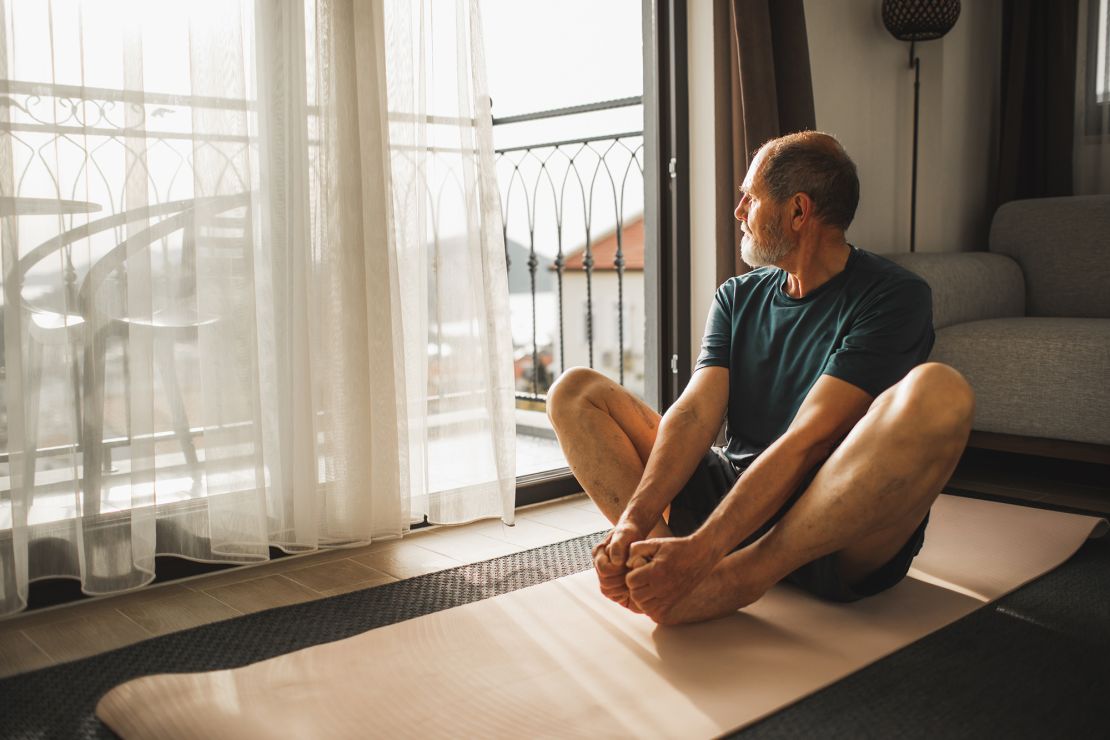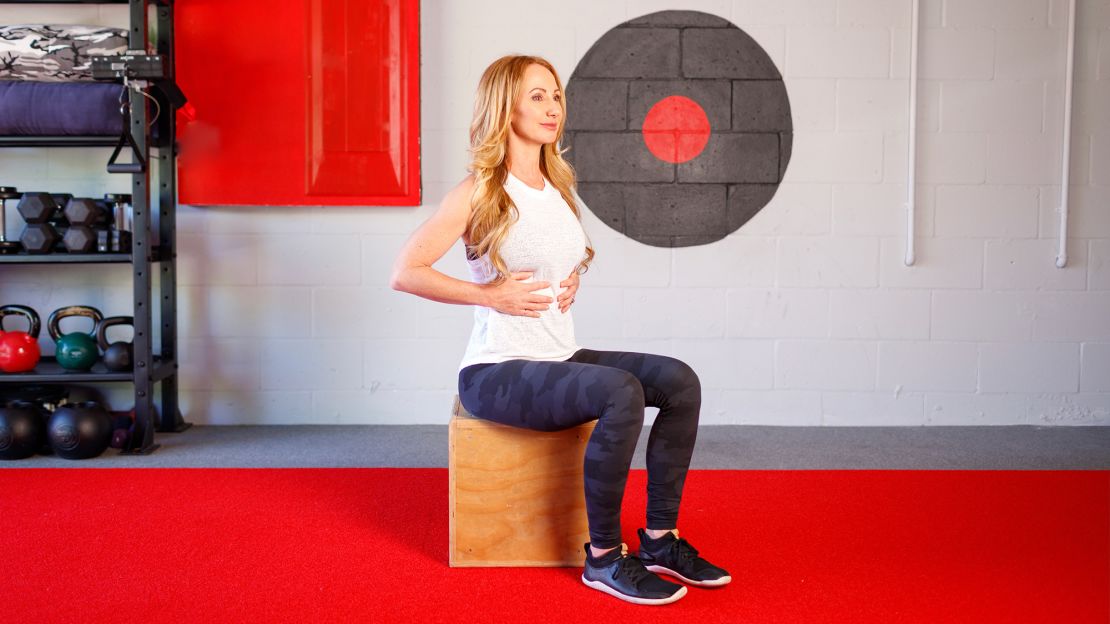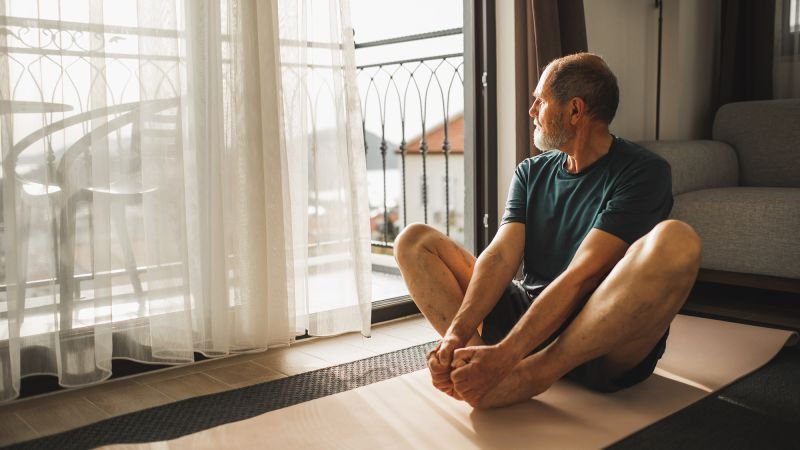CNN
—
Editor’s note: Dana Santas, known as the “Mobility Maker,” is a certified strength and conditioning specialist and mind-body coach in professional sports, and is the author of the book “Practical Solutions for Back Pain Relief.”
As people get older, stiffness and reduced mobility can feel inevitable, leading to the common belief that maintaining flexibility requires long, tedious stretching routines. But that’s not the case. You don’t need to spend hours stretching to move well as you age — you just need to move smarter.
By incorporating simple, intentional movement habits into your daily life, you can improve and maintain your mobility over time, keeping your body functional and resilient as you grow older.
While aging brings natural changes to your body, such as reduced muscle mass, joint stiffness and slower recovery, losing mobility doesn’t have to be one of them. Aging itself doesn’t automatically limit your mobility — lack of movement does.
Many people become more sedentary as they get older, exacerbating age-related muscle loss and joint stiffness. When you stop moving through a full range of motion regularly, your body adapts by reducing that range. This is true at any age, but it becomes even more impactful as you mature.
The good news? Mobility loss isn’t inevitable. Simple, strategic habits can keep you moving well for life.

1. Move your whole body, as designed
Think about how you move throughout the day: reaching for objects, pulling open doors, squatting to tie your shoes, rotating to grab a seat belt, and stabilizing your core to sit and stand upright. These natural movements occur in multiple directions and planes of motion, yet many people fail to train them regularly.
Just like everyday movement patterns, exercises should be performed in all three planes of motion: sagittal (forward and backward), frontal (side to side) and transverse (rotational).
Training movement in all the ways your body is designed to move helps you stay functional and mobile while also working to prevent pain and injury as you age.
Mobility isn’t just about workouts — it’s about how you move all day long. If you spend most of your time sitting, your body adapts to that position, leading to tight hips and weaker postural muscles.
Instead of relying on lengthy stretching routines that aren’t always effective, incorporate small movement breaks into your day by getting up and moving for just a few minutes. Even if you don’t have a lot of room to move, it helps to change positions frequently and try to reach, twist and bend in natural ways.
One way to make regular daily movement into a habit is through “habit stacking,” in which you pair an exercise with something you already do. For example, every time you get up from a chair, you could do five air squats or four step-back lunges.
Starting your day with just five minutes of movement can have a significant impact on how you feel and move throughout the day. And a short mobility routine, such as morning yoga, posture exercises at your desk or targeted stretches from the comfort of your couch, done consistently will make a big difference in your ability to move well over time.
Daily mobility work isn’t just about staying flexible — it’s also an opportunity to check in with your body. Moving through a regular routine allows you to identify areas of tightness or discomfort before they become bigger issues. If you experience pain or limited movement that doesn’t improve, consult your doctor, physical therapist or movement specialist to address potential underlying concerns.
Strength training is an important component for maintaining movement quality as you age. Strength exercises support mobility by keeping joints stable and preserving muscle mass to prevent stiffness-related weakness and improve recovery capacity.
Strength training can be done using free weights, machines or simply the resistance of your own body weight.
Even two short 10-minute strength sessions per week can prove beneficial, especially when focusing on compound movements — exercises that engage multiple muscle groups and joints at once. These movements mimic real-life actions, making them more functional than isolated exercises. To maximize mobility benefits, it’s also important to include compound movements that work across all three planes of motion.
Examples include squats (sagittal plane), lateral lunges (frontal plane) and standing torso twists (transverse plane). Prioritizing compound movements in all planes of motion ensures that your strength training enhances mobility rather than making you feel stiff or restricted.

Your breathing pattern directly affects how you move and feel in your body. Shallow chest breathing creates excess tension in the neck, shoulders and rib cage that limits movement and often results in chronic pain.
Several times a day, try to focus on diaphragmatic breathing in which inhales expand the lower ribs more than the upper chest. And be sure to practice extended exhales, as instructed below, completely emptying your lungs to help reduce upper-body tension to improve mobility and engage and align your core for increased stability.
Try this simple breathing exercise:
• Sit with your feet on the floor.
• Place your hands on your lower ribs.
• As you inhale deep into your lungs, you should feel the expansion of your lower ribs under your hands.
• As you exhale fully, your hands will ride your ribs back to their starting position.
• If you can, try to extend your exhale to double the count of your inhale. For instance, if you inhale for a count of four, try to exhale for a count of eight.
• Take five or more breaths in this pattern at least once a day — more, if possible.
By improving breathing mechanics, you improve your posture, relieve chronic tension and free up functional movement in your spine and shoulders.
Remember, losing mobility as you age isn’t a given. By making movement a daily habit and incorporating strength training, you can maintain flexibility, stability and ease of movement without spending hours stretching.
Sign up for CNN’s Fitness, But Better newsletter series. Our seven-part guide will help you ease into a healthy routine, backed by experts.


